High Climate Sensitivity
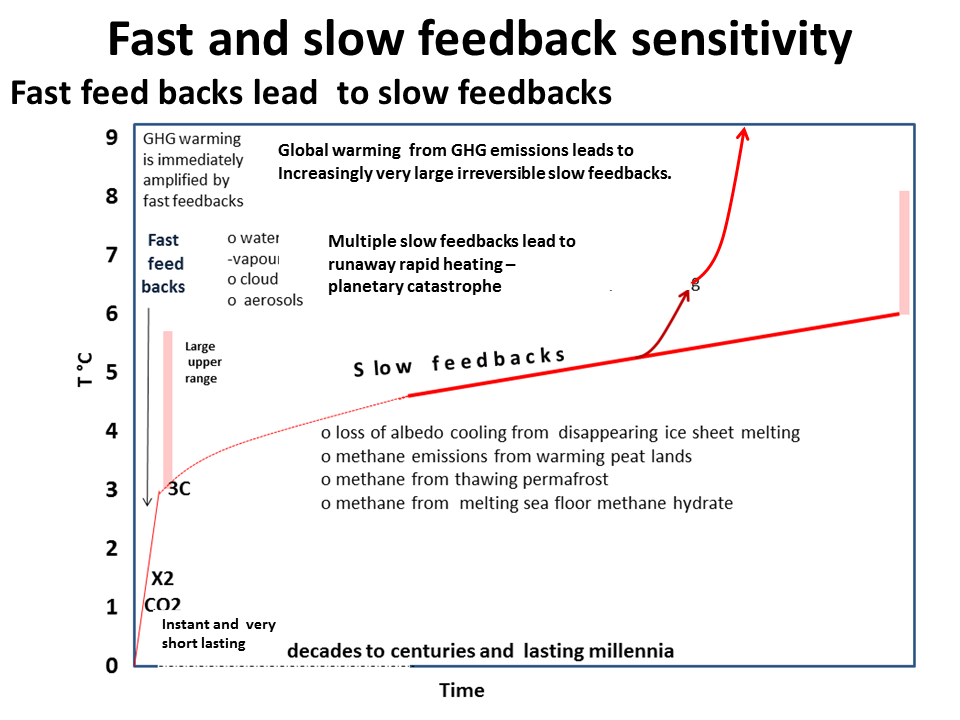
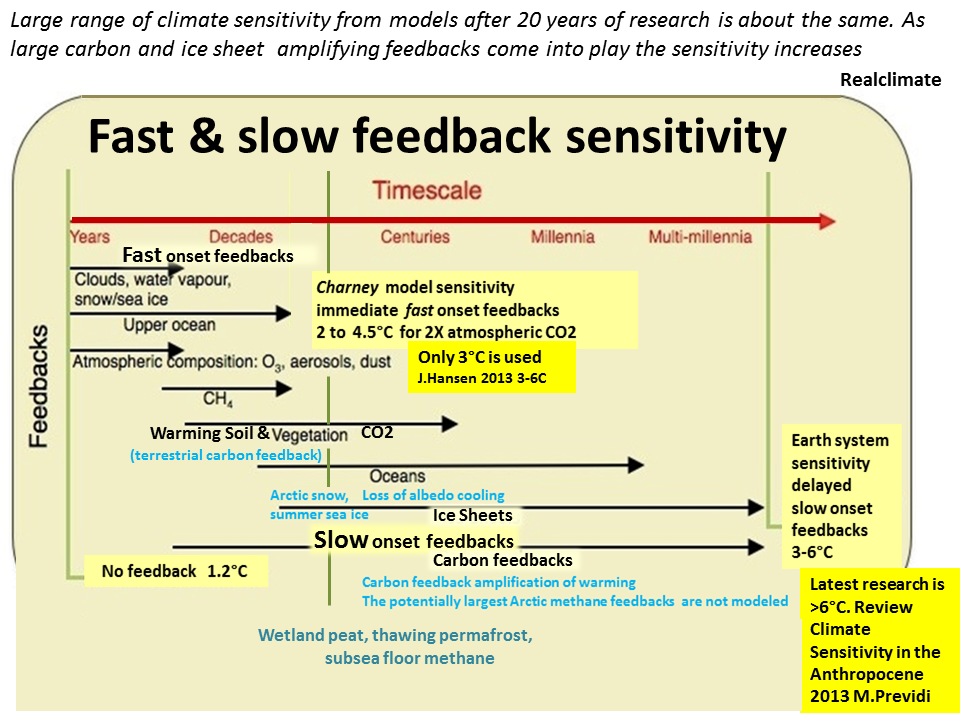
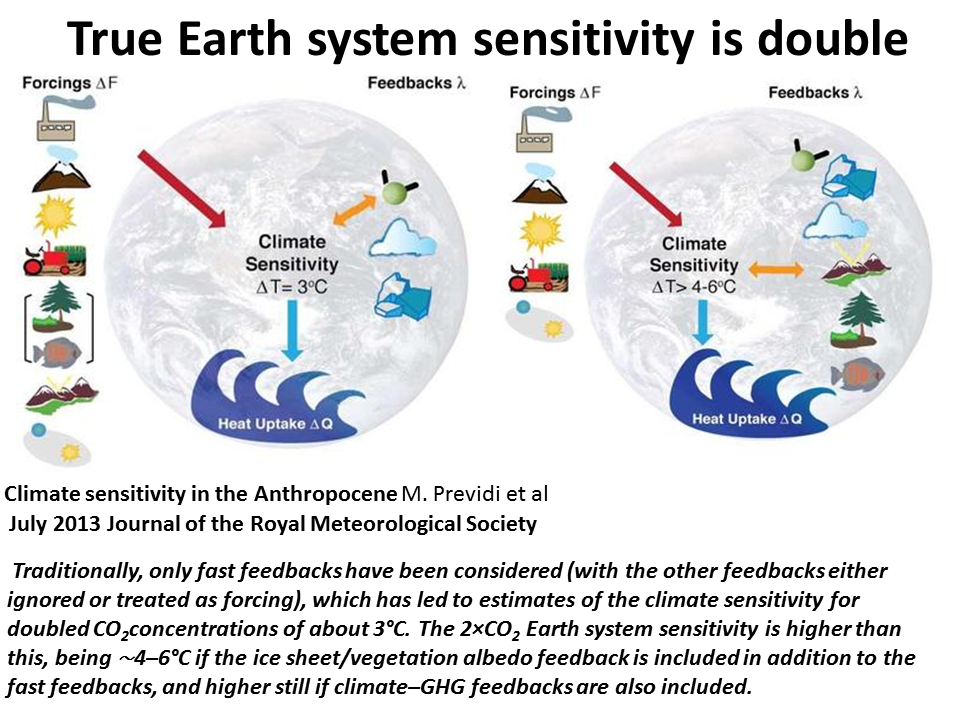
Latest research
Oct 2013 Discovery that agricultural practices help form clouds could change the way we calculate global warming- climate is more sensitive.
Oct 2013 Discovery that agricultural practices help form clouds could change the way we calculate global warming- climate is more sensitive.
Addendum Dec 2013, to Nov 2010 Climate Change Statement UK Geological Society
Climate sensitivity could be double
Climate sensitivity could be double
Jan 2014 Nature: Spread in model climate sensitivity traced to atmospheric convective mixing 2014 climate sensitivity (fast feedback) is higher: 4 rather than 3 Range 3 to 5C
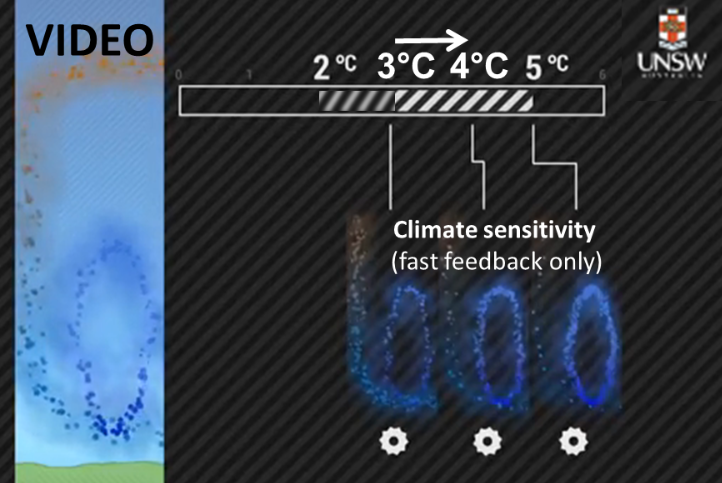
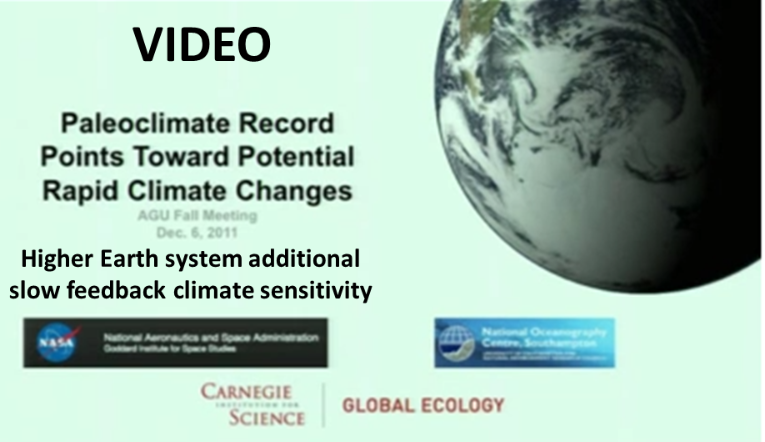
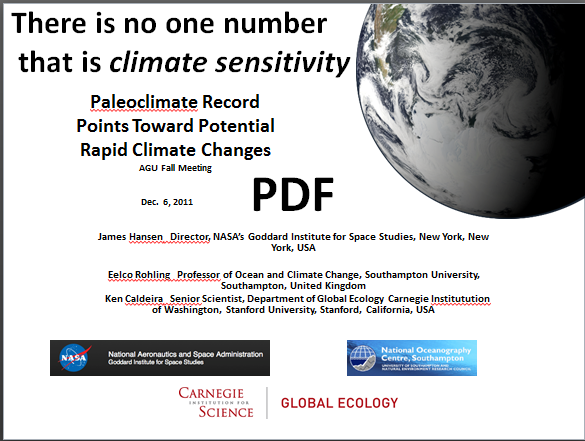

CLIMATE EMERGENCY INSTITUTE
The health and human rights approach to climate change
The health and human rights approach to climate change
2012 Climate Sensitivity Estimated From Earth's Climate History
2008 James E. Hansen and Makiko Sato
Target Atmospheric CO2: Where Should Humanity Aim? James Hansen
Abstract: Paleoclimate data show that climate sensitivity is ~3°C for doubled CO2, including only fast feedback processes. Equilibrium sensitivity, including slower surface albedo feedbacks,is ~6°C for doubled CO2 for the range of climate states between glacial conditions and ice-free Antarctica.
Equilibrium sensitivity 6°C for doubled CO2 is relevant to the case in which GHG changes are specified. That is appropriate to the anthropogenic case, provided the GHG amounts are estimated from carbon cycle models including climate feedbacks such as methane release from tundra and ocean sediments. The equilibrium sensitivity is even higher if the GHG feedback is included as part of the climate response, as is appropriate for analysis of the climate response to Earth orbital perturbations. The very high sensitivity with both albedo and GHG slow feedbacks included accounts for the huge magnitude of glacial-interglacial fluctuations in the Pleistocene in response to small forcings
2008 James E. Hansen and Makiko Sato
Target Atmospheric CO2: Where Should Humanity Aim? James Hansen
Abstract: Paleoclimate data show that climate sensitivity is ~3°C for doubled CO2, including only fast feedback processes. Equilibrium sensitivity, including slower surface albedo feedbacks,is ~6°C for doubled CO2 for the range of climate states between glacial conditions and ice-free Antarctica.
Equilibrium sensitivity 6°C for doubled CO2 is relevant to the case in which GHG changes are specified. That is appropriate to the anthropogenic case, provided the GHG amounts are estimated from carbon cycle models including climate feedbacks such as methane release from tundra and ocean sediments. The equilibrium sensitivity is even higher if the GHG feedback is included as part of the climate response, as is appropriate for analysis of the climate response to Earth orbital perturbations. The very high sensitivity with both albedo and GHG slow feedbacks included accounts for the huge magnitude of glacial-interglacial fluctuations in the Pleistocene in response to small forcings
Feb 2013 Time-dependent climate sensitivity(higher) & legacy of GHG emissions (last 23,000–165,000 yrs)
18 Dec 2015 NASA research Examination of Earth's recent history key to predicting global temperatures. The sensitivity is 70% higher than IPCC estimates used
Jan 2014 Drew Shindell Inhomogeneous forcing and transient climate sensitivity Transient C Sens is higher than IPCC estimates
7 April 2016 Global warming may be far worse than thought, cloud analysis suggests. Climate change projections have vastly underestimated the role that clouds play,
31 Dec 2013 Solution to cloud riddle reveals hotter future: Global temperatures to rise at least 4 degrees C by 2100
8 April 2016 Observational constraints on mixed-phase clouds
imply higher climate sensitivity Article on above paper
imply higher climate sensitivity Article on above paper
June 2016 Deep time evidence for climate sensitivity increase with warming
Jun 2016 Projection and prediction: Climate sensitivity on the rise
5 May 2015 Climate variability and relationships between top-of-atmosphere radiation and temperatures on Earth
Aug 2013 Time-dependent climate sensitivity and the legacy of anthropogenic greenhouse gas emissions
Nov 2016 -Nonlinear climate sensitivity and its implications
for future greenhouse warming
Equilibrium climate sensitivity for warm climates is much higher for today's warm climates
'For warm climates, the value (S warm) is more than two times larger.
for future greenhouse warming
Equilibrium climate sensitivity for warm climates is much higher for today's warm climates
'For warm climates, the value (S warm) is more than two times larger.
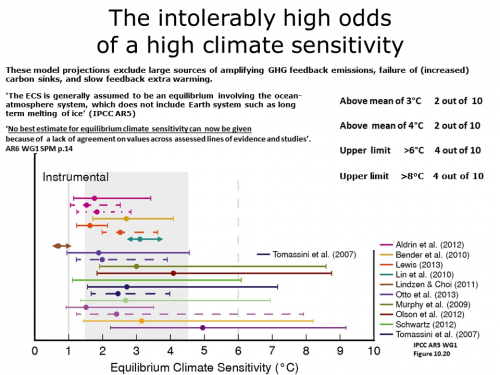
2011 NAP National Academy Science (US) Understanding Earth's Deep Past Lessons for Our Climate Future
Earth's deep paleo past shows a very high climate sensitivity
- up to 7 to 9.6C (+-1.5C , 3 M years ago (Pliocene).
2011 Jeffrey Khiel Lessons from Earth's Past Thus, the rate of increase in atmospheric CO2 is unprecedented in Earth’s history.
EARTH’S HOT PAST COULD BE PROLOGUE TO FUTURE CLIMATE NCAR January 13, 2011
The study also indicates that the planet’s climate system, over long periods of times, may be at least twice as sensitive to carbon dioxide than currently projected by computer models, which have generally focused on shorter-term warming trends.
2011 Jeffrey Khiel Lessons from Earth's Past Thus, the rate of increase in atmospheric CO2 is unprecedented in Earth’s history.
EARTH’S HOT PAST COULD BE PROLOGUE TO FUTURE CLIMATE NCAR January 13, 2011
The study also indicates that the planet’s climate system, over long periods of times, may be at least twice as sensitive to carbon dioxide than currently projected by computer models, which have generally focused on shorter-term warming trends.
Dec 2017 Nature, Brown & Caldiera, Greater future global warming inferred from Earth’s recent energy budget RCS 3.7C
Sept 2019 Earth to warm more quickly, new climate models show- by 2100, average temperatures could rise 6.5 -7.0 degrees C
VIDEO 10 Dec 2019 New Climate Model Predicts Alarming Levels of Global Heating
2011 NAP National Academy Science (US) Understanding Earth's Deep Past Lessons for Our Climate Future Earth's deep paleo past shows a very high climate sensitivity - up to 7 to 9.6C (3 M years ago (Pliocene).
VIDEO
The post 2014 IPCC AR5 climate models show that climate sensitivity (2X atmospheric CO2 without feedback emissions)
is much higher than the 3C used since 1990, so past global warming projections are large under-estimates.
Jan 2020 Causes of higher climate sensitivity in CMIP6 models
10 of 27 models project >4.5C and are valid results.
18 Sept 2019 Simulation of Eocene extreme warmth and high climate sensitivity through cloud feedbacks: Sens 6C